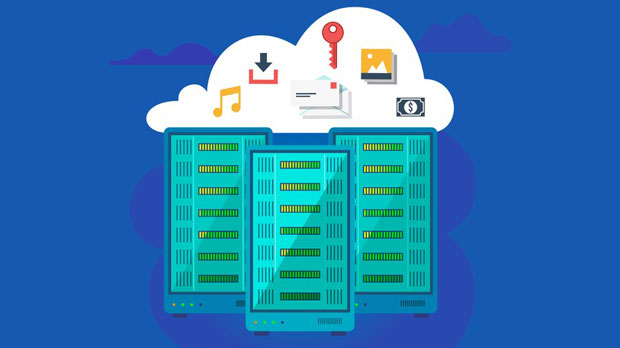In today's digital age, privacy and security have become essential when using proxies, especially residential proxies. Two prominent players in the proxy market are Oxylabs residential proxies and PYPROXY, both offering robust services to protect user anonymity online. In this comparison, we will delve into a detailed evaluation of both, focusing on security features, privacy policies, performance, and the overall reliability of each service. Understanding these aspects is crucial for businesses and individuals who rely on proxies for web scraping, accessing geo-blocked content, or conducting any form of online research, as data security and privacy are top priorities. Overview of Oxylabs residential proxies and PyProxyResidential proxies are essential tools for anyone who needs to maintain online anonymity, bypass geo-restrictions, or avoid detection while conducting web scraping or other automated tasks. Both Oxylabs residential proxies and PyProxy are known for their high-quality residential proxy services, but they have distinct features and offerings that may cater to different user needs.Security Features of Oxylabs residential proxies Residential ProxiesWhen it comes to security, Oxylabs residential proxies places a high emphasis on ensuring the safety and privacy of its users. Their residential proxies are sourced from real devices, which significantly reduces the likelihood of detection or blocking by target websites. This makes them a strong choice for users who need to conduct sensitive operations that require stealth, such as market research, competitor analysis, or accessing restricted content.Moreover, Oxylabs residential proxies employs advanced encryption protocols to ensure the data transmitted through their network is secure. Their system is designed to hide users' IP addresses effectively, ensuring that activities remain anonymous. With features such as IP rotation, Oxylabs residential proxies offers an added layer of protection against potential threats like DDoS attacks, which could compromise a user's security.Oxylabs Residential Proxy Security FeaturesPyProxy, on the other hand, offers a premium residential proxy service that is also designed with strong security features. They provide access to a vast pool of residential IPs, which are rotated frequently, making it difficult for websites to detect and block proxy traffic. This provides users with an increased level of anonymity while browsing or scraping.PyProxy goes a step further with its proprietary Anti-Ban technology, which helps protect users from IP bans and CAPTCHAs. Their security measures are specifically designed to ensure that clients can perform their tasks without interruptions, even in highly competitive environments. Additionally, PyProxy offers 24/7 monitoring and protection against any unusual activities, ensuring that users' online operations remain secure.Privacy Protection: Oxylabs residential proxies vs PyProxyBoth Oxylabs residential proxies and PyProxy prioritize privacy, but they approach it from slightly different angles. Oxylabs residential proxies is transparent about its data privacy policies, offering clear guidelines on how user data is handled. They ensure that no personally identifiable information (PII) is collected during proxy usage, which is an important consideration for those who value privacy above all else.PyProxy, while also committed to privacy, has more robust measures in place for users who need additional layers of protection. Their privacy policy includes a strict no-logs policy, meaning that they do not store any information about their users’ activities or sessions. This can be particularly valuable for businesses or individuals who want to ensure that no trace of their online operations is left behind.Performance and Speed ComparisonWhile security and privacy are crucial, performance is equally important when choosing a residential proxy service. Speed and reliability are essential for users who rely on proxies for high-volume tasks like web scraping or running automated bots.Oxylabs residential proxies is known for its stable performance, offering decent speeds with a network of residential IPs that are spread across different geographical regions. This makes it a solid choice for users who require consistent speed without significant fluctuations. However, while Oxylabs residential proxies offers good performance, it might not always be as fast or reliable as PyProxy, particularly during high-demand periods or when using certain regions.PyProxy, on the other hand, is renowned for its superior performance and high-speed residential proxies. Their network is vast, with access to millions of IPs from around the world, ensuring that users experience minimal lag or interruptions. PyProxy also boasts a high uptime rate and guarantees fast connection speeds, making it an excellent choice for businesses or professionals who require quick and reliable proxy services.Proxy Pool Size and AvailabilityOne of the key factors in choosing a residential proxy provider is the size and diversity of the proxy pool. A larger pool means more options for IP rotation and greater anonymity, as well as better chances of bypassing restrictions or blocking mechanisms on websites.Oxylabs residential proxies offers a moderately sized pool of residential IPs, which is sufficient for many users’ needs. However, the pool is not as extensive as PyProxy', which offers one of the largest residential proxy networks available today. PyProxy has millions of IP addresses in its pool, providing users with an extensive range of options to choose from. This larger pool allows for more frequent IP rotations and helps maintain higher levels of anonymity, which is critical when performing activities like scraping or avoiding detection on websites with strict anti-bot measures.Customer Support and Service QualityWhen using residential proxies, responsive customer support is crucial, particularly when troubleshooting issues related to connectivity or account management. Both Oxylabs residential proxies and PyProxy offer strong customer support, but there are differences in their service offerings.Oxylabs residential proxies provides a responsive support team that is available during business hours, offering assistance via email or live chat. They are generally known for providing helpful and timely responses, although support may not always be available 24/7. This can be a limitation for users in different time zones or those who require immediate assistance outside of standard working hours.PyProxy excels in customer support, offering 24/7 assistance to clients. Their team is well-equipped to handle technical issues, and they provide dedicated account managers for large or enterprise-level clients. The availability of round-the-clock support is particularly valuable for businesses that rely on proxies for critical operations and cannot afford downtime.Pricing Comparison: Oxylabs residential proxies vs PyProxyWhen it comes to pricing, Oxylabs residential proxies tends to offer more affordable plans compared to PyProxy. This makes Oxylabs residential proxies a suitable option for individuals or small businesses that need residential proxies but have budget constraints. However, the lower cost can sometimes reflect in the level of service and the performance of the proxies, which may not be as fast or reliable as PyProxy.PyProxy, while more expensive, offers a premium service that justifies the higher cost. With access to a larger proxy pool, superior performance, and 24/7 customer support, PyProxy provides excellent value for businesses that require high-quality, reliable proxies for demanding tasks. The price difference is likely to be a factor for those who are willing to invest in top-tier service and enhanced security features.Both Oxylabs residential proxies and PyProxy offer solid residential proxy services, but they cater to different types of users. Oxylabs residential proxies is ideal for those who are looking for an affordable and secure option for everyday tasks that do not require the highest level of performance. On the other hand, PyProxy excels in offering premium features, superior performance, and extensive proxy pools for businesses that need the best in terms of security, privacy, and reliability.Ultimately, the choice between Oxylabs residential proxies and PyProxy depends on your specific needs, budget, and the level of performance you require. For businesses that need top-tier security and speed, PyProxy is the clear winner, while Oxylabs residential proxies serves as a good option for more cost-conscious individuals and small businesses.
Sep 24, 2025

































































